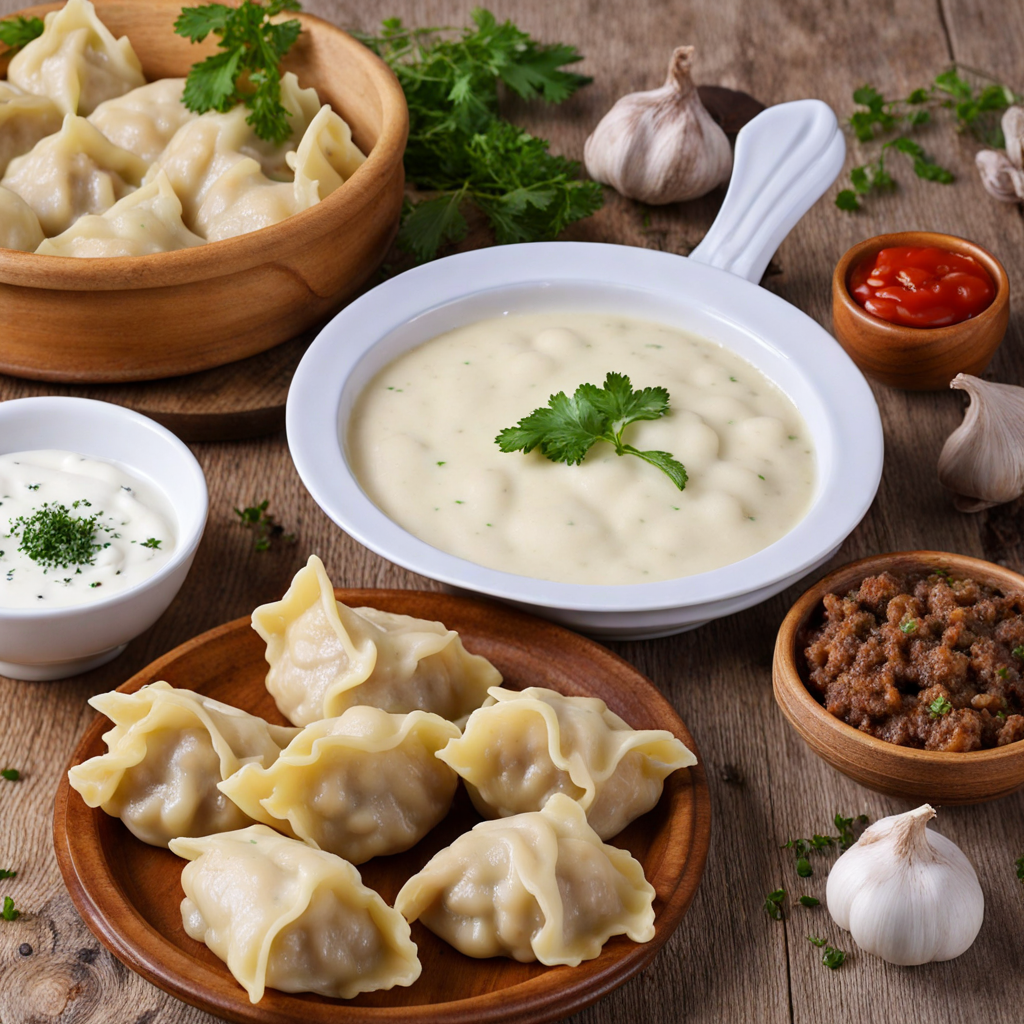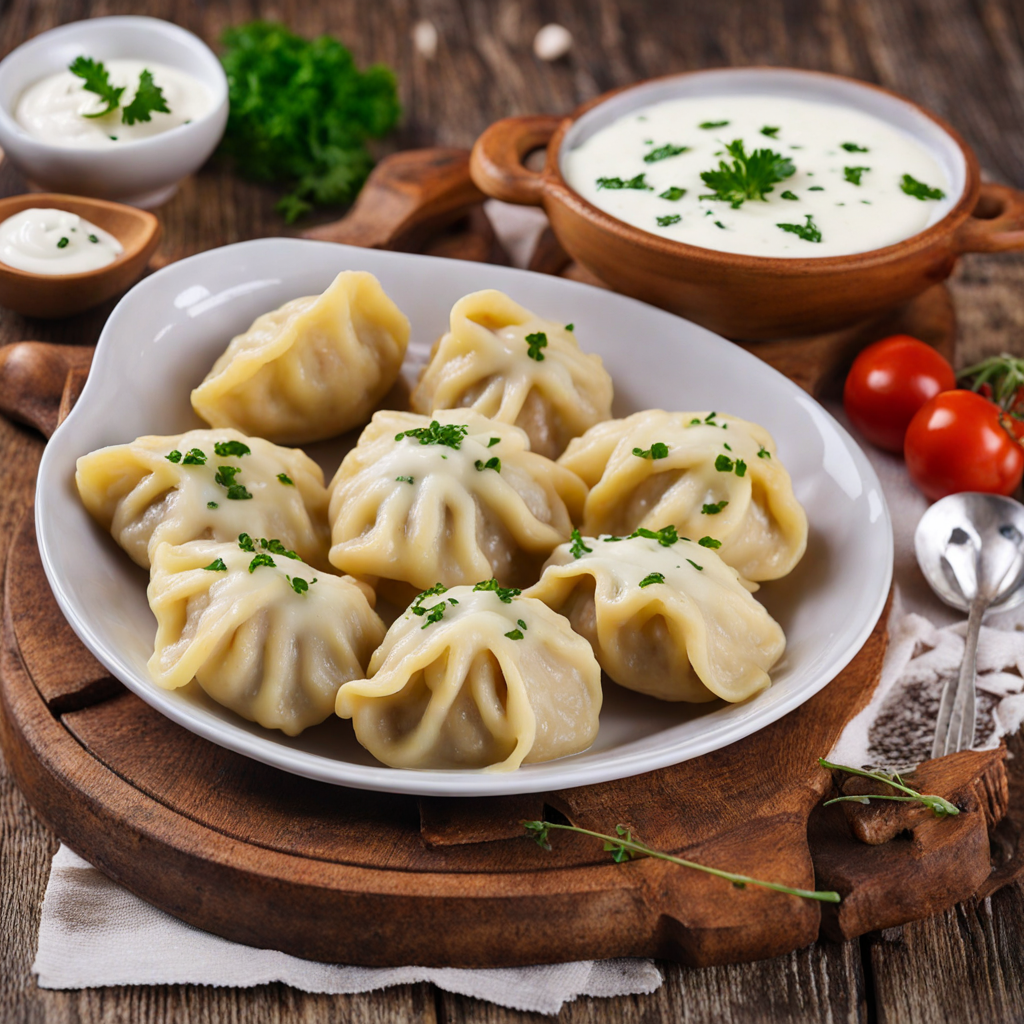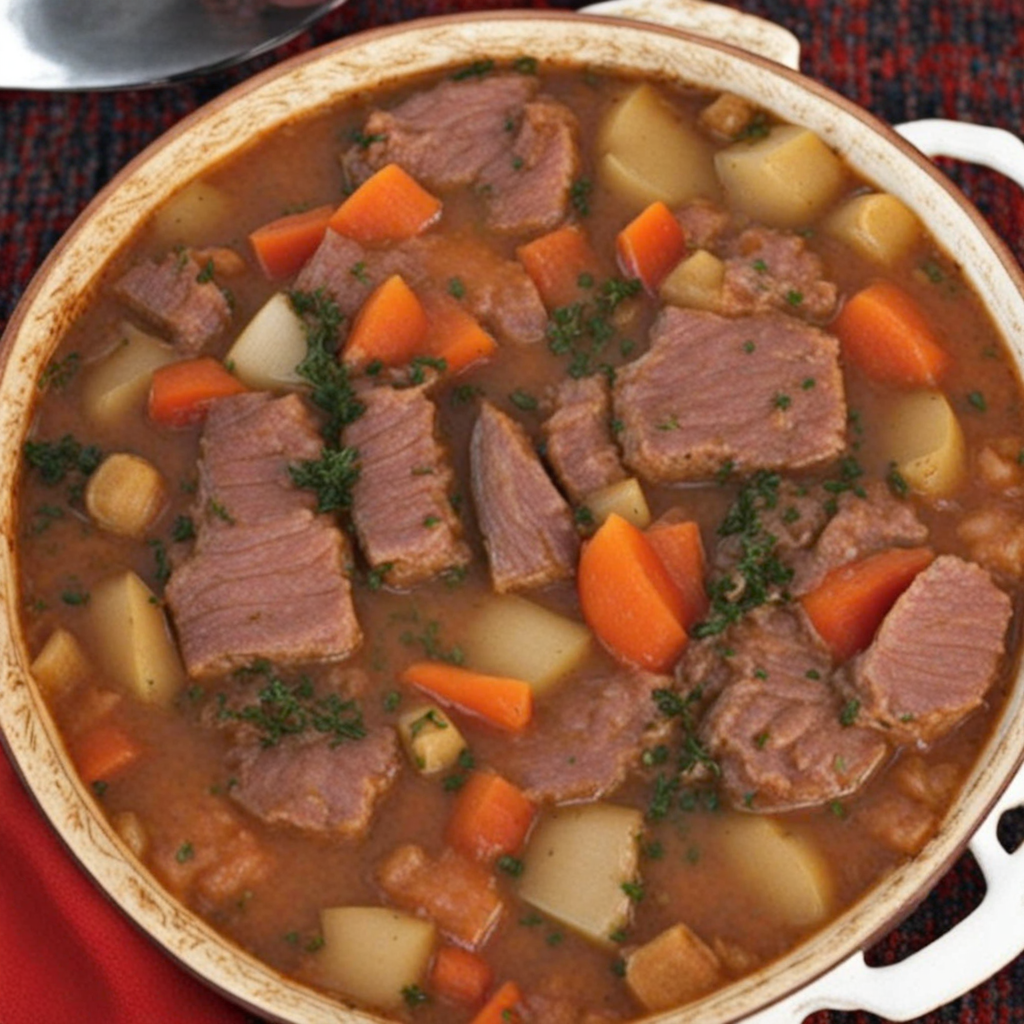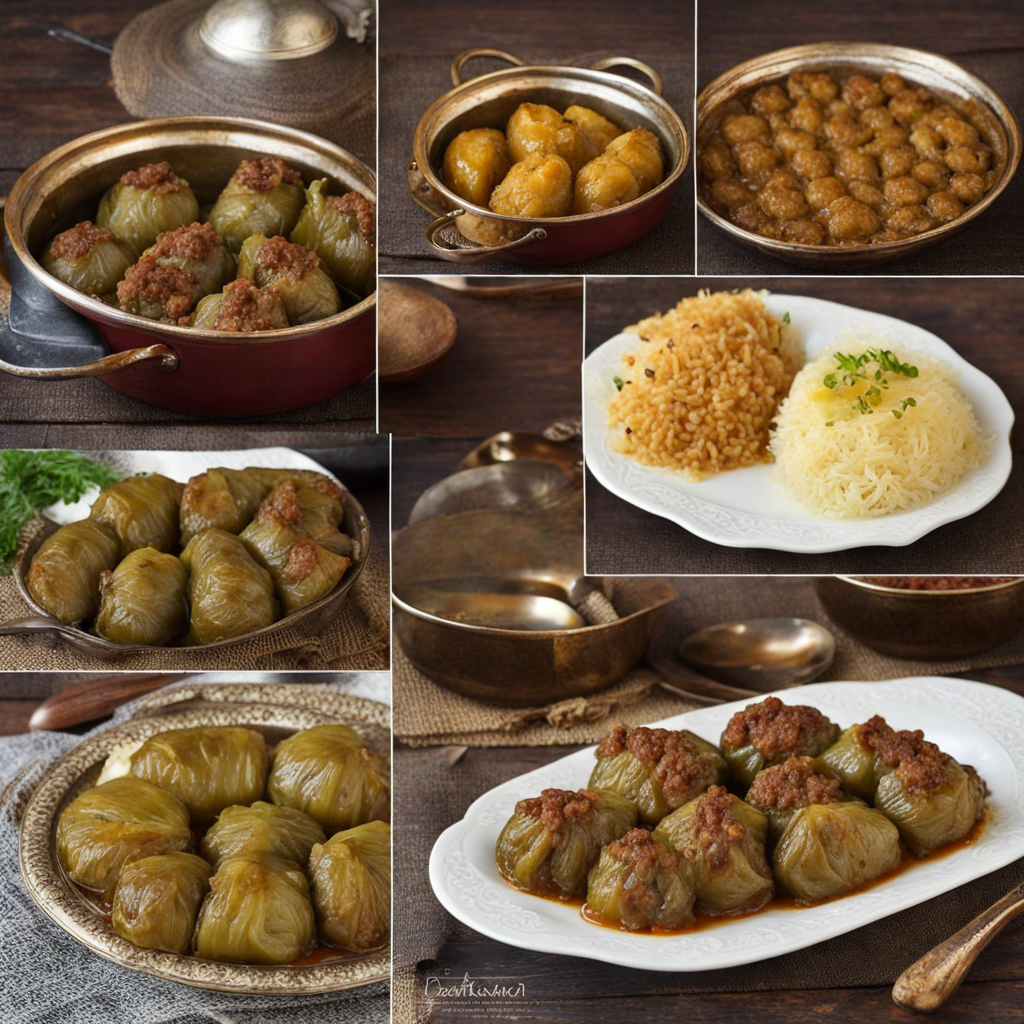Klepe
Klepe are a delightful traditional dish from Bosnia and Herzegovina, often compared to the more widely known dumplings or ravioli. These tender, hand-crafted parcels are made from a simple yet versatile dough, typically composed of flour, water, and salt. The dough is rolled out thinly and filled with a savory mixture, most commonly ground meat, which can include lamb, beef, or pork, combined with finely chopped onions and a hint of spices. The filled dough is then carefully folded and sealed, creating bite-sized morsels that are both comforting and satisfying. Once prepared, klepe are usually boiled until they reach a tender consistency, allowing the flavors to meld beautifully. They are often served with a drizzle of melted butter and a sprinkle of fresh herbs, such as parsley, which add brightness to the dish. Some variations include a topping of sautéed onions or a dollop of sour cream, enhancing the richness and providing a creamy contrast to the savory filling. The dish is not only a staple in Bosnian households but also a beloved comfort food that evokes nostalgia and warmth for many. Klepe are more than just a meal; they represent a cultural tradition and the art of family cooking. They are often made in large batches, bringing families and friends together for a communal cooking experience. Each region and family may have its unique twist on the recipe, creating a delightful diversity within this comforting dish. For anyone looking to explore new flavors, klepe offer a perfect combination of texture and taste, making each bite a memorable experience that captures the essence of Bosnian cuisine.
How It Became This Dish
The History of Клепе: A Culinary Gem of Bosnia and Herzegovina #### Origins and Early Development Клепе, pronounced "kle-pe," is a traditional dish from Bosnia and Herzegovina, deeply rooted in the region's culinary history. This dish consists primarily of dough dumplings filled with various ingredients, often meat or cheese, and served in a rich broth or with a sauce. The origins of клепе can be traced back to the Ottoman Empire, which had a significant influence on the Balkans' culinary practices during its long reign from the 15th to the 19th centuries. The Ottoman Empire introduced various culinary techniques and ingredients to the region, blending local traditions with Middle Eastern flavors. This fusion gave rise to many beloved dishes, including клепе. The basic concept of dumplings is not unique to Bosnia and Herzegovina; similar forms can be found in many cultures worldwide, such as Italian tortellini, Polish pierogi, and Chinese jiaozi. However, what sets клепе apart is the unique combination of ingredients and the way it is traditionally prepared and served in the Bosnian context. #### Cultural Significance Клепе holds a special place in Bosnian culture, often served during family gatherings, festive occasions, and religious celebrations. It embodies the essence of Bosnian hospitality, as sharing a meal is an important aspect of social life in the country. The preparation of клепе is typically a communal activity, involving family members working together to make the dough, fill the dumplings, and cook them. This practice not only strengthens family bonds but also connects generations, as recipes and techniques are passed down from elders to younger family members. Moreover, the dish reflects the agricultural traditions of Bosnia and Herzegovina, where farming and livestock rearing have been integral to local life. Ingredients such as potatoes, cheese, and various meats are sourced from local farms, emphasizing the importance of regional produce and seasonal cooking. The use of fresh, local ingredients not only enhances the flavor of клепе but also supports the local economy and fosters a sense of pride in Bosnian culinary heritage. Another aspect of клепе's cultural significance is its connection to national identity. Bosnia and Herzegovina is a country characterized by its ethnic diversity, with Bosniaks, Croats, and Serbs contributing to a rich tapestry of traditions and cuisines. Клепе, while widely enjoyed across different communities, serves as a culinary symbol of unity, showcasing the shared love for delicious food that transcends ethnic boundaries. #### Preparation and Variations The preparation of клепе involves several steps, starting with the dough. The dough is typically made from simple ingredients: flour, water, and salt. Once the dough is mixed and kneaded, it is allowed to rest, making it easier to roll out into thin sheets. The filling can vary widely, influenced by personal preferences or regional specialties. Common fillings include spiced minced meat (often a mix of beef and lamb), potatoes, or cheese, sometimes mixed with herbs and spices for added flavor. Once filled, the dumplings are shaped by pinching the dough around the filling, creating a distinctive crescent shape. They are then boiled in salted water until they float, a sign that they are cooked through. Traditionally, клепе is served in a rich broth made from meat and vegetables, often garnished with a sprinkle of fresh herbs or a drizzle of olive oil. Some variations include serving them with yogurt or a side of sautéed onions, enhancing the dish's flavor and texture. Regional variations of клепе exist, reflecting the diverse culinary practices of different areas in Bosnia and Herzegovina. For example, in some regions, the dumplings may be larger and served as a hearty main course, while in others, smaller versions are prepared as appetizers or side dishes. Additionally, the choice of filling can vary significantly, with some families opting for vegetarian fillings, particularly during Lent or other religious observances. #### Evolution Over Time As with many traditional dishes, клепе has evolved over time, adapting to changing tastes and circumstances. In the aftermath of the Bosnian War in the 1990s, the country faced significant economic challenges that affected food production and availability. Many families had to become resourceful, using whatever ingredients they could find to create meals. This period saw the emergence of new variations of клепе, often incorporating less traditional fillings or using creative substitutions to stretch ingredients further. In contemporary Bosnia and Herzegovina, клепе has experienced a renaissance, as a new generation of chefs and home cooks seeks to revive traditional recipes while also experimenting with modern techniques and flavors. This revival has also coincided with a growing interest in traditional food heritage, as people recognize the importance of preserving cultural identities through culinary traditions. Food festivals, culinary schools, and local restaurants now celebrate dishes like клепе, bringing them to wider audiences and introducing them to tourists eager to experience authentic Bosnian cuisine. Moreover, with globalization, there has been an increasing influence of international cuisines in Bosnia and Herzegovina. While some may view this as a threat to traditional cooking, many chefs see it as an opportunity to blend culinary traditions, creating innovative dishes that pay homage to the past while embracing the future. Клепе has found its place among these new culinary explorations, with chefs experimenting with fusion flavors and presentation styles, all while respecting the dish’s traditional roots. #### Conclusion Клепе is more than just a dish; it is a symbol of Bosnian identity, culture, and history. Its origins in the Ottoman Empire, its cultural significance in family and community gatherings, and its evolution over time highlight the resilience and adaptability of traditional cuisines. As Bosnia and Herzegovina continues to navigate the complexities of modern life, клепе remains a beloved culinary treasure, a reminder of the rich tapestry of flavors and traditions that define this unique Balkan nation. Through its preparation and enjoyment, клепе fosters a sense of connection among people, bridging generations and communities, and preserving the essence of Bosnian hospitality for years to come.
You may like
Discover local flavors from Bosnia And Herzegovina







